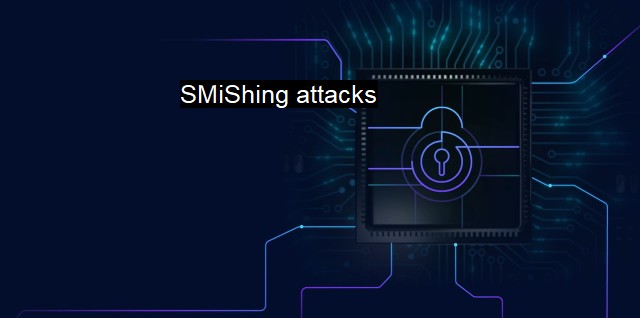What are SMiShing attacks?
SMiShing: The Insidious Rise of Mobile-Based Phishing Scams via SMS Messages and How to Protect Yourself
SMiShing is a sophisticated type of phishing attack that happens over mobile SMS messages. Often used to steal sensitive personal information, SMiShing has become a significant cause for concern in the world of cybersecurity. The term is a portmanteau of 'SMS' and 'phishing,' depicting its characteristics as an attack prevailing through text messaging.Like email phishing, SMiShing follows the same behavioral pattern of manipulation to deceive targets into revealing confidential information. they differ in their execution method. While phishing revolves around emails, SMiShings happens through SMS services. Hence, the potential victims here are mobile users.
The anatomy of SMiShing is not vastly diverse from a typical phishing attack. Cybercriminals often impersonate trustworthy organizations via an SMS with an intention to panic or induce curiosity in receivers. These messages generally come with a sense of urgency, urging recipients to act immediately to verify accounts, update personal information, or sometimes expose them to unclaimed loots. The message contains a link that leads users to a mock-up version of legitimate websites where they are asked to input sensitive information.
At surface level, these simulated websites may appear an exact clone of original sites where users usually conduct their business. But in reality, it is a trap where any input made records into the hacker's directory. By doing so, these illicit entities gain unauthorized access to bank accounts, credit card statements, social identities, and more.
Such breaches lead to serious consequences, including not limited to financial loss and identity theft. some severe SMiShing cases reveal planting malware or ransomware in recipients' devices that give the perpetrator direct access to users' mobile activities. There they can spy or steal sensitive information beyond just banking credentials and social information.
Implementing prevention measures is a crucial step towards tackling SMiShing attacks. Having robust antivirus software in mobile devices is the first line of defence. Such solutions have the capability to detect phishing websites, blocking access before users enter a harmful web environment. Another preventive measure that has been prominently suggested over the years is to avoid clicking links in text messages unless the sender's identity is verified.
Educating oneself and being aware of such fraudulent activities goes a long way in guarding against SMiShing. Understanding that authentic organizations and businesses rarely ask for personal information over text messages contributes greatly towards reducing victims of SMiShing. It is also advised to always cross-verify the authenticity of such messages by contacting the organization through an official communication mode before replying.
SMiShing may seem like a subtle issue within the vast universe of cybersecurity; its global impact is vast. Unlike conventional phishing, the design of SMiShing is sophisticated. It expertly uses the ubiquity of mobile phones making it highly effective and hazardous.
As rapid advancements in technology continue, so will the evolution of threats like SMiShing attacks. This scenario call for more sophisticated cybersecurity measures. Institutions and organizations should establish a strong protective mechanism, enforced with information security policies, employee training, and education about these threats. The marriage of advanced antivirus applications and conscious netizen behavior will serve as the strongest defence against SMiShing attacks.

SMiShing attacks FAQs
What is a smishing attack?
A smishing attack is a type of cyber attack that uses text messages to trick individuals into revealing personal information or downloading malware onto their devices.How does a smishing attack work?
A smishing attack will typically involve a text message that appears to be from a legitimate source, such as a bank or a reputable company. The message will ask the recipient to click on a link or to provide personal information, such as a social security number or login credentials. Once the recipient responds, the attackers can use this information to carry out identity theft or other malicious activities.How can I protect myself from a smishing attack?
To protect yourself from a smishing attack, never click on links or provide personal information in response to a text message or email that you were not expecting. Be wary of any messages that ask you to act urgently or that create a sense of panic. Additionally, it’s important to install and regularly update antivirus software on your devices to detect and prevent malicious activity.What should I do if I think I’ve fallen victim to a smishing attack?
If you think you’ve been a victim of a smishing attack, notify your bank or financial institution immediately to protect your accounts. You should also report the phishing attempt to the Federal Trade Commission (FTC) and consider freezing your credit to prevent identity theft. Finally, take steps to remove any malware from your device, such as resetting the device to its factory settings.| | A | | | B | | | C | | | D | | | E | | | F | | | G | | | H | | | I | | | J | | | K | | | L | | | M | |
| | N | | | O | | | P | | | Q | | | R | | | S | | | T | | | U | | | V | | | W | | | X | | | Y | | | Z | |
| | 1 | | | 2 | | | 3 | | | 4 | | | 7 | | | 8 | | |||||||